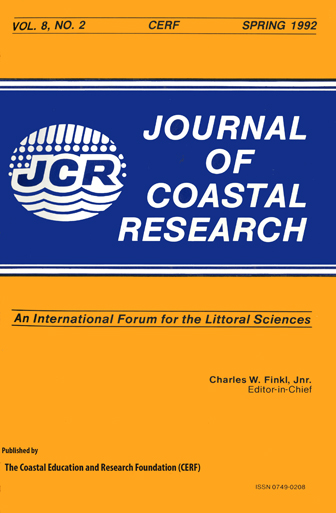Inlet Migration and Hydraulic Processes at East Pass, Florida
Keywords:
Ebb-tidal shoal, erosion, jetties, nearshore wave measurements, Santa Rosa Island, tidal hydraulics, tidal inletAbstract
East Pass, a tidal inlet in the Florida Panhandle between Pensacola and Panama City, connects Choctawhatchee Bay to the Gulf of Mexico. From 1983 to 1991, the U.S. Army Corps of Engineers sponsored a monitoring project to measure waves, currents, tidal elevations, bathymetry, and shoreline changes at the site. Based on these data and on historical records, a three-phase model has been developed which describes the inlet's behavior during the last. 120 years. The first phase (pre-1928) is of spit development and breaching and covers the period when the pass was oriented in a northwest-southeast direction between Choctawhatchee Bay and the Gulf. From 1928 to 1968, the inlet was characterized by the second phase: stable throat position but with a main ebb channel that migrated over a developing ebb-tidal delta. This phase covers the time after the inlet breached through Santa Rosa Island in a north-south direction and began to migrate to the east. The third phase, spanning 1968, when rubble-mound jetties were built, to the present is characterized by a stable throat and ebb channel, and ebb-tidal shoal growth. Despite the jetties, East Pass has continued to demonstrate a tendency to move eastward. The driving forces of the eastward migration are hypothesized to be: (1) Wave forces. The predominant wave direction measured in 10-m water depth is from the southwest, while the shoreline trends east-west. (2) Backbay tidal channel and flood-tidal shoal geometry direct ebb currents towards the eastern shore of the inlet. (3) Because of freshwater inputs, the ebb flow is longer in duration and higher in velocity than the flood.


